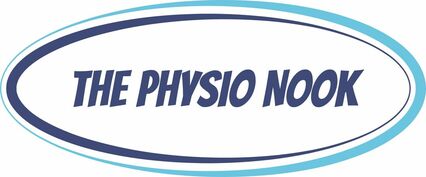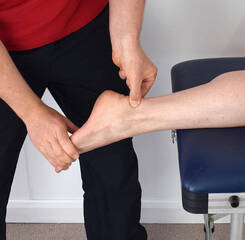|
Bursae are small sacs of fluid found throughout the body. These bursae produce synovial fluid and reduce friction between muscles, tendons, ligaments and bones as they move over each other. Bursae are located at strategic points, typically where there are higher points of stress. If a bursa is injured or irritated, it can become inflamed and painful, a condition referred to as bursitis. One bursa that can be affected is the olecranon bursa, which sits just over the hard bony process at the back of the elbow. Olecranon bursitis refers to inflammation of the bursa at this point and is a common condition, particularly in men between the ages of 30-60, though anyone can be affected. What causes it?
Olecranon bursitis has a few possible causes including trauma, overuse and infection. A sharp blow to the elbow, through a fall or hit, might damage the bursa leading to bursitis. In other cases, the bursa can be infected by bacteria, which enter the body through a small skin tear. Bursitis can also develop slowly through friction of the nearby muscles that cause the bursa to become irritated and inflamed. What are the symptoms? The hallmark of this condition is a painful, red, swollen area at the back of the elbow. Typically pain is worst when resting on the tip of the elbow or with elbow movements, particularly when bending or straightening the elbow fully. The pain may last a few months and not go away on its own. The pain can build up gradually, or come on suddenly, depending on the cause. Bursitis caused by infection (septic bursitis) may also be associated with general feelings of illness such as fatigue, fever and body aches. What is the treatment? As there are many different causes of this condition, accurate diagnosis is essential. Your physiotherapist is able to distinguish between olecranon bursitis and similar conditions such as rheumatoid arthritis. Septic bursitis will need to be treated by a medical professional who will determine the best course of action, likely including antibiotics. All types of bursitis can be managed initially with a RICE protocol to reduce pain and swelling (Rest, ice, compression and elevation). Mechanical causes of bursitis can require more in depth identification of the factors that may have led to the development of this condition. Your physio is able to address these factors and possibly provide taping support to unload the bursa along with manual therapy and an exercise program. If this is unsuccessful, cortisone injections are often used to reduce pain and inflammation. In severe cases where the pain persists despite all other attempts at treatment, the bursa can be surgically removed in a procedure called a bursectomy. Once the pain has subsided your physiotherapist is also able to help prevent any further recurrence.
0 Comments
Tendons, the connective tissues that join muscles to bone are known for being notoriously difficult to treat once injured. The reason for this is that often they are injured through stress or overuse, and compared to muscles they can have relatively poor blood flow, which is essential for healing. Tendons and muscles work together to move your joints and together are called a contractile unit. As muscles are exercised and gain strength, the attaching tendons are also placed under tension and adapt to this to become stronger. If the load placed on the tissues exceeds their capacity, the tendon fibres can begin to break down and become stiff and painful. Is my pain related to a tendon injury?
For an accurate diagnosis, you will need to be assessed by a physiotherapist. However, some signs that your pain might be coming from an in issue with a tendon are; · The pain is quite specific and can be felt over the tendon itself; · The pain is worse when under stress and improves when rested; · The pain improves after exercise has started, but it might be worse once you cool down; · The area around the tendon may feel stiff after periods of rest, particularly in the morning. How are tendon injuries treated? When it comes to recovery, tendons are often treated differently to other injuries. While each tendon injury is unique and will require assessment and intervention by a physiotherapist, there are a few general approaches that usually help with all tendon injuries. Reducing your activity to a comfortable level is the first step to recovery. Complete rest can actually delay healing as the tendon simply becomes weaker and less able to cope with subsequent loads. Your physiotherapist can provide you with a targeted exercise program to aid your recovery. Eccentric exercises, which are exercises that work alongside gravity, have been shown to stimulate tendon healing and strength. Stretching may aggravate your injury and should be used with caution. Assessment of any biomechanical faults or stresses that are placing undue load on the tendon is also a central component of treatment. Your physiotherapist is able to guide you with your recovery and return to sport to avoid aggravating any injury. What is it? Bursae are small sacs of fluid found throughout the body. These bursae produce synovial fluid and act to reduce friction between muscles, tendons, ligaments and bones as they move over each other. Bursae are located at strategic points, typically where there are higher points of stress. If a bursa is injured or irritated, it can become inflamed, painful, red and swollen. This condition is referred to as bursitis. One bursa that is commonly affected is the olecranon bursa, which sits just over the hard bony process at the back of the elbow. Olecranon bursitis refers to inflammation of the bursa at this point and is a common condition, particularly in men between the ages of 30-60. What causes it?
Olecranon bursitis has a few different causes including trauma, overuse and infection. A sharp blow to the elbow, through a fall or hit, might damage the bursa leading to bursitis. In other cases, the bursa can be infected by bacteria, which enter the body through a small skin tear. Bursitis can also develop slowly through friction of the nearby muscles that cause the bursa to become irritated and inflamed. What are the symptoms? The hallmark of this condition is a painful, red, swollen elbow. Typically pain is worst when resting on the tip of the elbow and/or with elbow movements, particularly when bending or straightening the elbow fully. The pain often lasts a few months and may not go away on its own. The pain may build up gradually, or come on suddenly, depending on the cause. Bursitis caused by infection (septic bursitis) may also be associated with general feelings of illness such as fatigue, fever and body aches. What is the treatment? As there are many different causes of this condition, accurate diagnosis is essential. Your physiotherapist is able to distinguish between olecranon bursitis and similar conditions such as rheumatoid arthritis or fibromyalgia. Septic bursitis will need to be treated by a medical professional who will determine the best course of action. All types of bursitis can be managed initially with a RICE protocol to reduce pain and swelling (Rest, ice, compression and elevation). Mechanical causes of bursitis can require more in-depth identification of the factors that may have led to the development of this condition. Common contributing factors are throwing technique, muscle tightness and/or weakness and training frequency. Your physiotherapist is able to address these factors and possibly provide taping support to unload the bursa, along with manual therapy and an exercise program. In most cases, conservative or non-surgical treatment is attempted as the first line of treatment. If this is unsuccessful, corticosteroid injections can be used to reduce pain and inflammation. In severe cases where the pain persists despite all other attempts at treatment, the bursa can be surgically removed in a procedure called a bursectomy. Once the pain has subsided your physiotherapist is also able to help prevent any further recurrence. |
Categories
All
|




